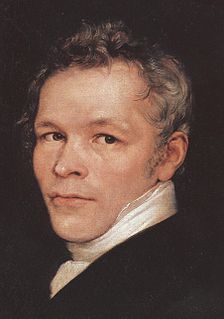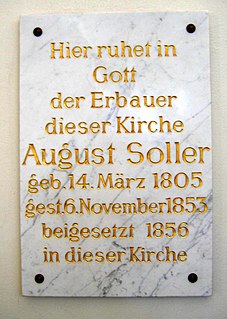Hermann Johannes Gustav Pundt (28 August 1928 – 17 September 2000) was a leading architectural historian and Professor in the University of Washington Department of Architecture.
Pundt was born and raised in Berlin, Germany. In 1944, at age 16, he began service as a Naval Cadet. He fought in the defense of Berlin against the Russian army in 1945. After his capture by the Russians, he escaped from a P.O.W. camp the following December. Pundt came to the United States in 1951. He was drafted to serve in the Korean War with an aerial intelligence unit of the U.S. Marine Corps. He was naturalized as a U.S. citizen in 1954.
In 1955, Pundt began the study of architectural engineering, design and history at the University of Colorado. From 1957 to 1960 he studied history of art and architecture at the University of Illinois at Urbana-Champaign, where he received his B.A. and M.A. degrees in 1960. In 1960-61 he traveled in Europe, supported by the Mary McLean Travel Scholarship. Pundt went on to Harvard University where he earned his Ph.D. with Distinction from the Graduate School of Arts and Sciences in June 1969; his dissertation was supervised by Professors James S. Ackerman and Eduard F. Sekler.
From 1962 to 1968, Pundt taught at the University of Illinois, at both the Urbana and Chicago campuses. He was the founder of the Committee on Architectural Heritage, a University of Illinois student/faculty organization that fought for the preservation of Frank Lloyd Wright’s Frederick Robie House. He also participated in the fight to save H. H. Richardson’s John J. Glessner House in 1966.
Pundt moved to Seattle in 1968 to join the faculty of the Department of Architecture at the University of Washington. He was promoted to full Professor in 1973. He received a joint appointment in the School of Art, Division of Art History in 1976. He was also a member of the faculty of the College of Architecture & Urban Planning (now College of Built Environments) Certificate Program in Historic Preservation.
Pundt was an inspirational teacher, he offering courses in architectural history and historic preservation. He also taught in the UW Architecture in Rome program in 1977 and 1987, and he taught at the Technische Universitat, Berlin, in 1974-75 (as a Fulbright Senior Lecturer), and at Tokyo Institute of Technology in 1982. He was an invited speaker at various schools in the U.S., Europe and Japan.
Pundt’s published scholarship addressed nineteenth century Prussian architect, Karl Friedrich Schinkel (1781-1841). His publications included Schinkel’s Berlin: A Study in Environmental Planning (1972; German edition 1981; Japanese edition, 1985), and he was a principal contributor and co-author for Karl Friedrich Schinkel: Sammmlung Architektonischer Entwürfe (Collection of Architectural Designs) (1982, and subsequent editions). Through his involvement with the Committee on Architectural Heritage, he was the instigator of an exhibition and associated catalogue, Frank Lloyd Wright: Vision and Legacy (1967).
Pundt's preservation interests led to his involvement in US/ICOMOS (International Council on Monuments and Sites). Beginning in 1990, he was a member of the Gesellschaft des Wiederaufbaus der Frauenkirche, Dresden, a citizen initiative for the reconstruction of Dresden’s famous Church of Our Lady, destroyed in 1945. After German reunification, he lectured and consulted on preservation projects such as the Palace and Gardens of Sanssouci in Potsdam, the Bauhaus in Dessau, and the reconstruction of historic Dresden.
Pundt was the recipient of multiple awards including: Karl Friedrich Schinkel Medal (Bauakademie, Berlin, 1981), Victor Steinbrueck Chair (University of Washington College of Architecture & Urban Planning, 1983), Lionel Pries Teaching Award (voted by students in the UW College of Architecture & Urban Planning (now College of Built Environments), 1985), University of Washington Distinguished Teaching Award (1992), and Order of Merit, First Class, of the Federal Republic of Germany (1992).
In June 1996, Pundt retired after more than 35 years as a university faculty member, but continued to teach on a reduced schedule. He died on September 15, 2000, in Donauwörth, Germany.
Pundt is remembered by former students for his inspirational presentations on architecture and preservation. He was an advocate of the arts and humanities in the face of what he perceived as an increasing academic and societal emphasis on science and technology.

Karl Friedrich Schinkel was a Prussian architect, city planner, and painter who also designed furniture and stage sets. Schinkel was one of the most prominent architects of Germany and designed both neoclassical and neogothic buildings. His most famous buildings are found in and around Berlin.

Schwerin Castle, is a schloss located in the city of Schwerin, the capital of Mecklenburg-Vorpommern state, Germany. It is situated on an island in the city's main lake, Lake Schwerin.

Karl-Marx-Allee is a monumental socialist boulevard built by the GDR between 1952 and 1960 in Berlin Friedrichshain and Mitte. Today the boulevard is named after Karl Marx. It should not be confused with the Karl-Marx-Straße in the Neukölln district of Berlin.

Friedrich David Gilly was a German architect and the son of the architect David Gilly.

Heinrich Ludwig Ferdinand von Arnim was a German architect and watercolour-painter. He was a student of Karl Friedrich Schinkel and mainly worked in Berlin and Potsdam.

Friedrich Ludwig Persius was a Prussian architect and a student of Karl Friedrich Schinkel.

Peter Joseph Lenné was a Prussian gardener and landscape architect. As director general of the Royal Prussian palaces and parks in Potsdam and Berlin, his work shaped the development of 19th-century German garden design in the Neoclassical style. Laid-out according to the principles of the English landscape garden, his parks are today part of the UNESCO World Heritage.

Hermann Henselmann was a German architect most famous for his buildings constructed in East Germany during the 1950s and 1960s.
Barry Bergdoll is Meyer Schapiro Professor of art history in the Department of Art History and Archaeology at Columbia University and from 2007 to 2019 a curator in the Department of Architecture and Design at the Museum of Modern Art, New York, where from 2007 to 2013 he served as Philip Johnson Chief Curator of Architecture and Design. He serves, since 2018, as President of the Board of the Center for Architecture in New York City.

Friedrich August Stüler was an influential Prussian architect and builder. His masterpiece is the Neues Museum in Berlin, as well as the dome of the triumphal arch of the main portal of the Berliner Stadtschloss.

Aloys Hirt was a German art historian and archaeologist of Ancient Greek and Roman architecture. He was responsible for the King of Prussia's antiquities collection from 1798, and became the University of Berlin's first professor of art theory and art history in 1810.

Paul Ludwig Simon, also known as Paul Louis Simon, was a German architect and professor at the Building Academy (Bauakademie) in the faculty of architectural physics and a privy architectural counsellor at the Prussian Higher Council of Architecture in Berlin. In the latter position Simon was the predecessor of Karl Friedrich Schinkel. Simon was serving as well as Senior Director of public works for the Marches of Pomerania and Prussia. Beside these fields of activity Simon did – at that time in Europe well known – research work in the field of Electrochemistry and Galvanism. He published different articles on these subjects in German scientific journals – as for example “Physics Annual”.

The College of Built Environments (CBE) is an academic college at the University of Washington in Seattle. The CBE offers programs in architecture, construction management, landscape architecture, real estate, and urban planning. From 1957 to 2009, it was known as the College of Architecture and Urban Planning (CAUP). Today, the College of Built Environments is made up of five core units: Architecture/Architectural Design, Construction Management, Landscape Architecture, Real Estate, and Urban Design & Planning. It also houses two interdisciplinary Ph.D. degrees, as well as several other interdisciplinary centers and institutes. The 2009 name change reflects an integrated approach to planning, design, and construction that will be necessary to take on the 21st-century global challenges of urbanization and climate change.

Hugo Georg Licht was a German architect.

Johann Heinrich Strack was a German architect of the Schinkelschule. His notable works include the Berlin Victory Column.

Johann August Karl Soller was a Prussian, and later, German architect. He was one of the most important of Karl Friedrich Schinkel's pupils and is regarded as a representative of the Schinkel school. Soller became an influential proponent of Rundbogenstil, a Romanesque revival architectural style that became popular in German-speaking lands and among German diaspora during the 19th century.

Hermann Jansen was a German architect, urban planner and university educator.

Hermann Philipp Wilhelm von der Hude was a German architect.
Carl Heinrich Hermann was a German fresco-painter.

Hinnerk Scheper was a German colour designer, mural painter, architectural colorist, non-fiction author, photographer, monument conservator, restorer, state curator and urban planner.